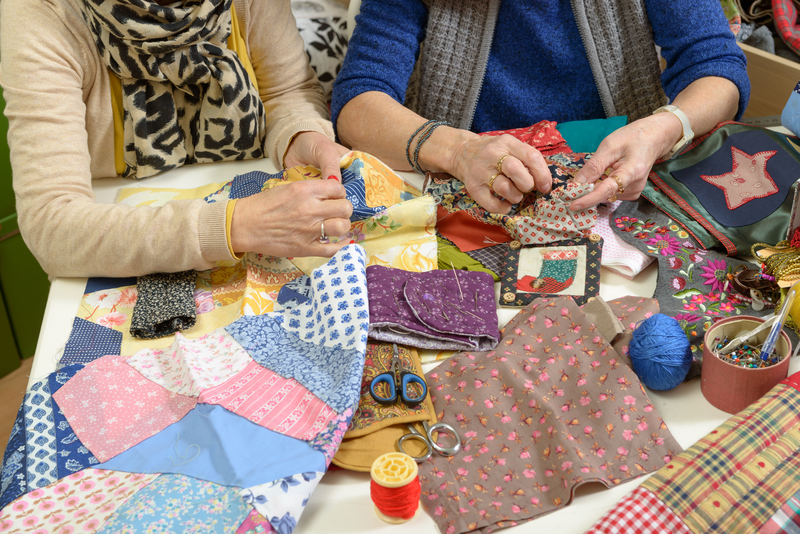How to Responsibly Get Rid of Unwanted Pots and Pans
If your kitchen cabinets are overflowing with old or mismatched cookware, you may be wondering how to responsibly get rid of unwanted pots and pans. Disposing of cookware is not as straightforward as tossing them in the trash—many pots and pans can be recycled, donated, or creatively reused. In this comprehensive guide, you'll discover several sustainable solutions for responsibly parting ways with your old cookware, minimizing your environmental impact, and maybe even helping someone else in the process.

Why Proper Disposal of Cookware Matters
The environmental impact of throwing away pots and pans is significant. Most cookware is made from metals like aluminum, stainless steel, or copper, sometimes mixed with non-stick coatings or plastics. These items can take hundreds of years to decompose in a landfill and can release toxins into soil and water.
- Metal cookware: Recyclable, but must be processed correctly
- Non-stick pans: The coating may release harmful substances if incinerated
- Plastic handles or parts: Slow to degrade and not always recyclable
Properly disposing of old pots and pans helps to:
- Reduce landfill waste
- Minimize resource extraction
- Support community organizations
- Encourage a circular economy
First Step: Assess the Condition of Your Cookware
Before you decide how to get rid of cookware, evaluate its current state. Is it still usable or is it beyond repair? This assessment will determine whether you should recycle, donate, or repurpose your pots and pans.
- Usable: No cracks, warping, or heavy residue
- Non-usable: Warped, deeply scratched, flaking coatings, or burnt
Questions to Ask:
- Does the non-stick surface have deep scratches?
- Are handles secure and in good condition?
- Is the pot or pan still functional, even if unattractive?
- Can it be cleaned up for reuse?
Ways to Responsibly Get Rid of Old Pots and Pans
1. Donate Usable Kitchenware
If your old pots and pans are in good condition, consider giving them a second life by donating to:
- Charity thrift shops: Goodwill, Salvation Army, and local stores frequently accept gently used cookware.
- Community shelters or soup kitchens: Homeless or domestic violence shelters may appreciate serviceable pots and pans.
- Churches, schools, or community centers: These organizations sometimes run classes or communal kitchens.
- Online sharing platforms: Use Facebook Marketplace, Freecycle, Craigslist, or Buy Nothing groups to give away cookware locally.
Tip: Always clean cookware thoroughly before donating, and check with organizations regarding their current needs and donation criteria.
2. Sell Functional Cookware
If you're downsizing, upgrading, or just decluttering, why not sell your unwanted pots and pans? This gives usable items a second chance and earns you a little extra.
- Online marketplaces: Sell on eBay, Poshmark Home, Mercari, Facebook Marketplace, or OfferUp.
- Garage sales: Pots and pans (especially specialty items like cast iron) often sell quickly at yard sales.
- Consignment shops: Some stores will accept quality cookware, especially if it's a recognizable brand or in excellent condition.
3. Recycle Old or Damaged Pots and Pans
If your cookware is beyond use from warping, rust, or lost non-stick coating, recycling is the most responsible option for disposal. Here's how to do it right:
What Types of Cookware Can Be Recycled?
- Stainless steel pans
- Aluminum pots and pans
- Copper cookware
Non-stick cookware and pans with plastic handles are more challenging to recycle. Many curbside recycling programs will not accept them due to the coatings or added materials.
How to Recycle Cookware:
- Remove Non-Metal Parts: Unscrew or break off plastic or wooden handles and discard in the trash.
- Find a Metal Recycler: Most scrap metal recycling centers will accept pots and pans.
- Prepare the Items: Rinse and remove all food residue.
- Check Local Rules: Contact your local recycling facility to check whether they accept household cookware, and if there are any special instructions.
Helpful Recycling Tips:
- Look for recycling signs on your cookware. If in doubt, call your local recycling center.
- Specialty programs: Some brands, such as Teflon or Calphalon, offer mail-in recycling for their products. Check the manufacturer's website for details.
4. Repurpose Your Old Pots And Pans
Before discarding, ask yourself: Can I upcycle my old pots and pans? Repurposing saves landfill space and can add personality to your home or garden. Here are creative ways to reuse battered cookware:
- Planters: Drill a few drainage holes in the bottom and turn that dented stockpot into an herb garden or flower planter.
- Organizers: A frying pan without a handle makes a great catch-all tray or drawer organizer.
- Decor: Hang vintage or interestingly patinaed pans as wall art.
- Bird Baths: Make a backyard birdbath with an old basin or shallow pan.
- Candle Holders: Use small saucepan lids to catch candle wax.
- Tool Storage: Use deep pots to store garden tools or kitchen utensils.
5. Return to Manufacturer Take-Back Programs
A few cookware companies have embraced sustainability by offering take-back programs for their products.
- Calphalon: Their Cookware Recycling Program lets you mail in old nonstick cookware of any brand for recycling (U.S. only).
- GreenPan: Check if they offer recycling options or partnerships with local scrap yards or recycling centers.
- Tefal and Teflon: Some regions offer brand-specific recycling programs for nonstick pans.
Check the brand's website or customer service for current programs, as these options expand over time.
What to Avoid When Disposing of Pots and Pans
- Throwing them in the regular trash: Most cookware should never go in your kitchen garbage. Landfills aren't equipped to break down metals efficiently.
- Illegal dumping: Leaving cookware on the curb, in vacant lots, or in parks is illegal and harmful to the environment.
- Improper curbside recycling: Not all areas accept cookware in household recycling bins. Placing them there can contaminate other recyclables.
- Burning non-stick cookware: Non-stick coatings can release toxic chemicals if burned. Never incinerate these materials.
Frequently Asked Questions About Disposing of Cookware
Can I recycle non-stick pans?
You can recycle non-stick pans in many places, but you usually need to remove the handles and separate them from any plastic parts. Some recycling centers will accept them, others will not – always call your local facility to check. Check for cookware take-back programs for non-stick pans as a safer option.
Are ceramic or glass cookware recyclable?
No, ceramic and glass cookware are generally not accepted in standard recycling programs. However, they can be donated if still usable, or repurposed for creative home projects.
Is it OK to donate scratched or used pans?
If the pan is simply scratched but still functional, yes, you can donate it. If the non-stick coating is heavily flaking, warped, or the pan is rusted through, it's best to recycle or repurpose rather than donate.
Should I try to repair my cookware instead?
If the issue is minor, like a loose handle, try repairing before disposing. Replacing a screw or cleaning off stains can often give your cookware more life. For non-stick pans with worn surfaces, however, replacement is safer.
The Environmental Impact of Disposing Pots and Pans
When you responsibly get rid of old cookware, you are:
- Conserving natural resources by recycling valuable metals
- Reducing carbon footprint, as recycling requires less energy than mining new metals
- Protecting wildlife by keeping hazardous materials out of landfills and waterways
Even small actions—like finding a new home for your old frying pan—make a difference.

Summary: The Responsible Way to Dispose of Pots and Pans
- Assess condition: Can it still be used, or is it trash?
- Donate or sell if it's usable: Give to those in need or earn money by selling online.
- Recycle if not usable: Remove non-metal parts and deliver to a recycling center or scrap yard.
- Repurpose creatively: Turn old cookware into unique planters, organizers, or decorations.
- Use manufacturer take-back programs: Look for brand-specific recycling options.
Responsible pot and pan disposal is a straightforward way to contribute to a healthier planet. By following these eco-friendly steps, you ensure that your unwanted cookware doesn't become unnecessary waste, and you may even inspire your community to do the same.
Final Thoughts: Empowering Responsible Choices
Every year, millions of pieces of cookware end up in landfills. With more awareness of how to responsibly get rid of unwanted pots and pans, everyone can make better choices for the environment and their community. Whether you're decluttering or upgrading your cookware, choose a path that supports sustainability—your efforts, however small, truly make a difference!
For further local guidance on recycling or donating used kitchenware, check your municipality's official waste management website or reach out to your nearest scrap metal or donation center. Remember, responsible disposal is part of a greener way of living!